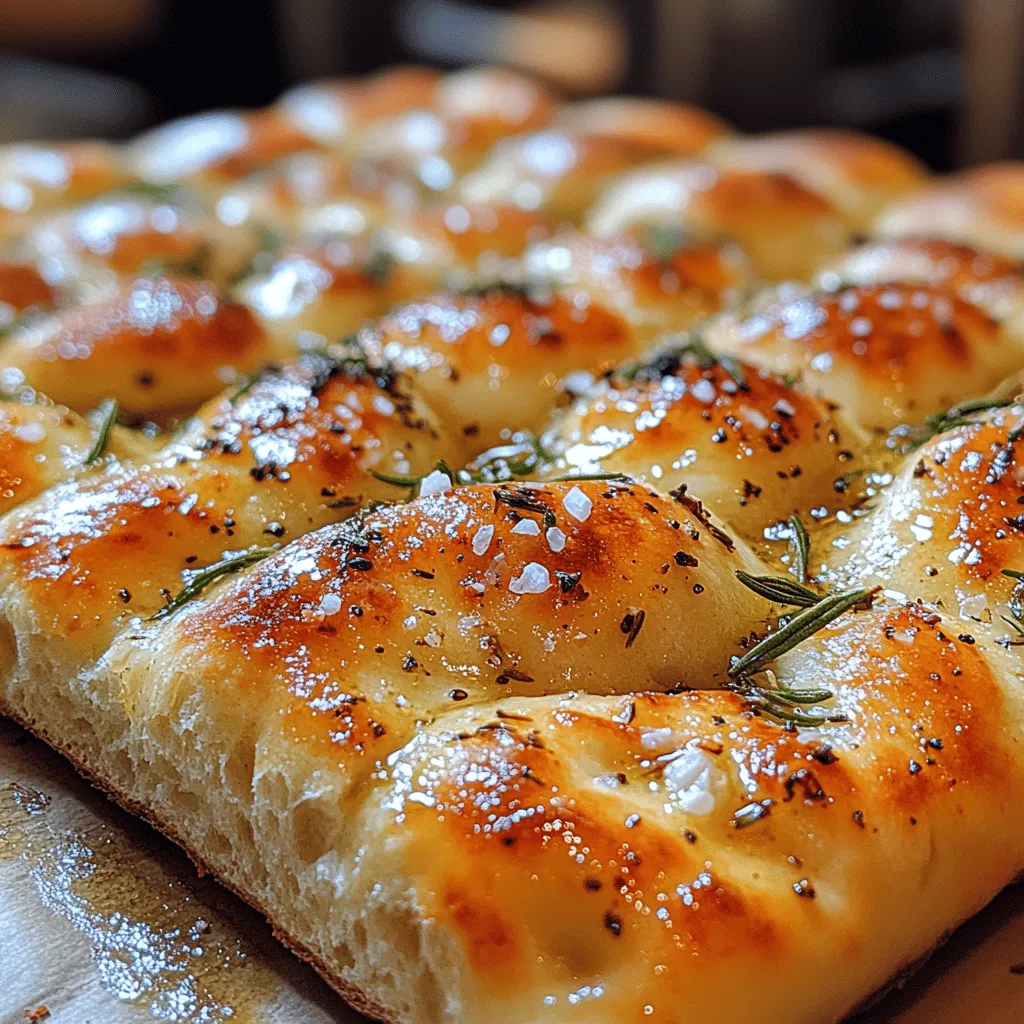Introduction
Italian cuisine is celebrated for its emphasis on fresh ingredients, regional flavors, and comforting dishes that evoke a sense of warmth and nostalgia. Among these culinary treasures, risotto stands out as a quintessential comfort food that is both satisfying and versatile. This creamy rice dish, known for its rich flavors and velvety texture, is a staple of Italian cooking that has captured the hearts—and appetites—of food lovers around the world.
At the heart of our recipe today is the mushroom, a key ingredient that adds depth and an earthy richness to the risotto. The variety of mushrooms available—from the delicate flavors of button mushrooms to the robust taste of shiitake—offers a unique twist to this classic dish. The interplay between the creamy Arborio rice and the umami notes of the mushrooms creates a symphony of flavors that is simply irresistible.
Mastering the art of risotto may seem daunting, but fear not; this recipe will guide you through every step, ensuring that you achieve that perfect creamy consistency and al dente bite that is the hallmark of a well-made risotto. So, roll up your sleeves and prepare to embark on a culinary journey that will transport you to the rustic kitchens of Italy.
Understanding Risotto: The Heart of Italian Cooking
Risotto is more than just a dish; it represents the essence of Italian cooking—simple, quality ingredients prepared with care and attention. Traditionally, risotto is made using Arborio rice, a short-grain rice variety known for its high starch content, which contributes to the dish’s signature creaminess.
The history of risotto can be traced back to Northern Italy, particularly in the regions of Lombardy and Piedmont. Originally, risotto was a method of preparing rice in a broth, which resulted in a creamy and hearty dish that could easily be adapted to include various ingredients depending on the season. Over the years, this humble dish evolved into a celebrated staple of Italian cuisine, with each region adding its own twist. For instance, risotto alla Milanese is famously flavored with saffron, while seafood risotto showcases the bounty of the ocean.
A perfect risotto possesses several key characteristics: a creamy texture that envelops each grain of rice, a slightly firm bite (al dente) that provides a satisfying chew, and a depth of flavor that comes from a well-prepared broth. The technique of slow, gradual cooking—adding broth incrementally and stirring consistently—allows the rice to release its starches, resulting in the creamy consistency that is the hallmark of this dish.
Essential Ingredients for Mushroom Risotto
To create a delicious mushroom risotto, it’s important to gather high-quality ingredients that will enhance the dish’s flavors. Here’s a breakdown of the essential components you’ll need:
– Arborio Rice: The star of the dish, Arborio rice is essential for achieving that creamy consistency. Its high starch content allows it to absorb flavors and liquids, creating a luscious texture.
– Mushrooms: The variety of mushrooms you choose can significantly impact the flavor profile of your risotto. Common options include button mushrooms, cremini, shiitake, and porcini. Each type of mushroom brings its own unique taste and texture, so feel free to mix and match or choose your favorites.
– Onion: Finely diced onion adds sweetness and depth to the dish. It is typically sautéed at the beginning to build the flavor base.
– Garlic: Minced garlic contributes aromatic qualities and a subtle kick that complements the earthiness of the mushrooms.
– Broth: A flavorful broth is crucial for infusing the rice with taste. You can use vegetable, chicken, or mushroom broth, depending on your preference. Make sure it is warm when added to the risotto to ensure even cooking.
– White Wine: A splash of dry white wine enhances the dish’s acidity and complexity. As the alcohol cooks off, it leaves behind a subtle flavor that elevates the overall taste.
– Parmesan Cheese: Grated Parmesan cheese adds creaminess and a savory saltiness that rounds out the dish. It’s best to use freshly grated cheese for optimal flavor.
– Fresh Herbs: Chopped fresh herbs, such as parsley or thyme, can be stirred in at the end to brighten the flavor and add freshness.
– Optional Ingredients: For those looking to elevate their risotto further, consider adding a drizzle of truffle oil for an earthy aroma or frozen peas for a pop of color and sweetness.
Preparing the Ingredients for Success
Before diving into the cooking process, it’s essential to prepare your ingredients properly to ensure a smooth cooking experience. Here are some key steps to follow:
1. Clean and Chop the Mushrooms: Start by cleaning your mushrooms. Wipe them gently with a damp cloth or paper towel to remove any dirt. Avoid soaking them in water, as mushrooms can absorb moisture and become soggy. Depending on the size, slice or chop the mushrooms into even pieces to ensure uniform cooking.
2. Dice the Onion: For the onion, peel and trim the ends, then slice it in half. Place the cut side down on the cutting board and make vertical and horizontal cuts to create small, even dices. This will help the onion soften quickly and evenly when sautéed.
3. Mince the Garlic: Peel the garlic cloves and use a knife to mince them finely. You can also use a garlic press for convenience. The smaller the pieces, the more flavor they’ll impart to the dish.
4. Warm the Broth: In a separate saucepan, heat your broth over low heat until it is warm but not boiling. Keeping the broth warm is crucial, as adding cold broth to the risotto can slow down the cooking process and affect the texture.
With your ingredients prepped and ready to go, you are well on your way to mastering the art of mushroom risotto. The next step will lead you through the cooking process, where the magic truly happens.
The Step-by-Step Process of Making Mushroom Risotto
Now that you have all your ingredients prepared, let’s break down the cooking process into clear, manageable steps. Follow these instructions, and you’ll be on your way to creating a delicious, creamy mushroom risotto that will impress family and friends alike.
1. Sauté the Onions and Garlic
In a large, heavy-bottomed pot or skillet, heat a couple of tablespoons of olive oil over medium heat. Once the oil is shimmering, add the diced onions and a pinch of salt. Sauté the onions for about 3-4 minutes until they become translucent and start to soften.
Next, add the minced garlic to the pan. Stir the mixture for an additional minute, allowing the garlic to release its aromatic qualities without burning. This combination of onions and garlic forms the flavorful base of your risotto.
2. Toast the Rice
Once the onions and garlic are beautifully sautéed, it’s time to add the Arborio rice. Pour in the rice and stir it into the onion-garlic mixture, ensuring that each grain is coated in the oil. Toasting the rice for 1-2 minutes helps to enhance its nuttiness and prepares it for absorbing the broth.
3. Deglaze with White Wine
After toasting the rice, pour in the dry white wine. This step is critical as it adds acidity and complexity to the dish. Stir the mixture continuously until the wine is mostly absorbed by the rice. This process not only deglazes the pan, releasing any flavorful bits stuck to the bottom, but also infuses the rice with the wine’s rich flavors.
4. Add the Broth Gradually
Now comes the most crucial part of making risotto: adding the broth. Using a ladle, add a portion of the warm broth (about one cup) to the rice mixture. Stir gently to combine, and then allow the rice to simmer over medium heat. As the liquid is absorbed, the rice will begin to release its starches, creating that signature creamy texture.
Continue to add broth, one ladle at a time, stirring frequently. Wait until the liquid is mostly absorbed before adding the next ladle of broth. This process will take about 18-20 minutes, and it’s important to keep stirring to promote even cooking and creaminess.
5. Incorporate the Mushrooms
As the risotto nears completion, around the 15-minute mark, it’s time to add the prepared mushrooms. Stir in the sliced mushrooms and continue to add broth as needed. The mushrooms will cook down and release their flavors into the risotto, enhancing the overall taste of the dish.
6. Finish with Cheese and Herbs
Once the rice is creamy and al dente, remove the pot from the heat. Stir in the grated Parmesan cheese until melted and well incorporated. This step adds richness and a delightful umami flavor.
To finish, fold in some freshly chopped herbs for brightness, and adjust the seasoning with salt and pepper to taste.
By following these steps, you’ll create a mushroom risotto that’s not just a meal but a heartfelt experience of Italian home cooking. Get ready to savor each creamy bite and enjoy the comfort that this classic dish brings.
—
Stay tuned for the next part of this article, where we will explore tips for achieving the best results and address some common questions about making mushroom risotto.

Savory Rosemary Garlic Focaccia: A Culinary Delight
Continuing the Recipe Steps
To achieve the perfect savory rosemary garlic focaccia, it’s essential to follow the steps meticulously. After allowing the dough to rise, it’s time to prepare it for baking. The first step is to gently punch down the dough to release any air bubbles formed during the rising process. Transfer the dough to a greased baking pan, using your fingers to spread it out evenly. If you’re using a rectangular pan, a 9×13 inch size works well, while a round pan of similar capacity will also suffice.
Once the dough is spread, cover it with a damp cloth and allow it to rise again for about 30 minutes. This second rise will contribute to the airy texture that focaccia is known for.
The Infusion of Flavors: Rosemary and Garlic
While the dough is resting, prepare your flavor infusions. In a small skillet over medium heat, gently warm a few tablespoons of olive oil. Add minced garlic and fresh rosemary to the oil, allowing them to simmer for a few minutes until fragrant. This step is crucial as it not only flavors the oil but also infuses the focaccia with a rich, aromatic essence.
Once the dough has risen, use your fingers to create dimples across the surface. This is not just for aesthetics; these indentations help hold the infused oil. Generously drizzle the rosemary-garlic oil over the surface, making sure to get it into the dimples. This will create pockets of flavor as the focaccia bakes.
Baking to Perfection
Preheat your oven to 425°F (220°C). Now, it’s time to bake the focaccia. Place the pan in the oven and bake for about 20-25 minutes, or until the top is golden brown and the edges are crisp. The aroma that fills your kitchen will be irresistible, hinting at the deliciousness to come.
Once baked, remove the focaccia from the oven and let it cool in the pan for a few minutes. For an added touch, sprinkle a little sea salt on top while it’s still warm. This enhances the flavor and adds a delightful crunch.
Tips for Achieving the Perfect Focaccia Texture
To create focaccia that is light, airy, and full of flavor, keep these tips in mind:
1. Hydration: Focaccia dough is typically wetter than traditional bread dough. This extra moisture helps to create that fluffy interior. Don’t hesitate to use more water if necessary; just ensure you can still handle the dough.
2. Kneading: While focaccia doesn’t require extensive kneading, it should be mixed sufficiently to develop some gluten. This will help trap air bubbles. A few minutes of kneading by hand or in a stand mixer is usually enough.
3. Rising Times: Allow your dough to rise fully. The first rise should double in size, and the second rise, while shorter, is equally important for texture.
4. Dimples: Don’t skip the dimpling step. This technique not only adds to the visual appeal but also helps retain the flavorful oil in the dough.
Flavor Enhancements and Variations
While the classic rosemary and garlic combination is undeniably delicious, there are numerous ways to customize your focaccia to suit your taste or occasion.
– Herbs: Beyond rosemary, consider experimenting with other herbs such as thyme, oregano, or even sage. Each herb brings its unique flavor profile, allowing for endless variety.
– Cheese: Incorporating cheese can elevate your focaccia. Try adding crumbled feta or mozzarella on top before baking for a melty surprise. Alternatively, sprinkle grated Parmesan over the dough after drizzling with oil for an added savory note.
– Vegetables: Top with thinly sliced tomatoes, olives, or caramelized onions for an additional layer of flavor. These toppings not only enhance taste but also add visual appeal.
– Sweet Variations: For a twist, consider creating a sweet focaccia with honey, figs, or seasonal fruits. Adding a sprinkle of cinnamon can create a delightful dessert option.
Serving Suggestions and Pairings
Focaccia is incredibly versatile and can be served in numerous ways:
– As an Appetizer: Cut into squares and serve warm with a side of olive oil for dipping. This simple yet elegant presentation is perfect for gatherings.
– With Soups or Salads: Pair focaccia with a hearty soup or a fresh salad. Its texture complements creamy soups beautifully, and it can be used to soak up the delicious broth.
– Sandwiches: Use focaccia as a base for sandwiches. Its sturdy structure can hold up against fillings like roasted vegetables, deli meats, or gourmet cheeses, making it an excellent choice for a satisfying lunch.
– Wine Pairings: When selecting a wine to accompany your focaccia, look for options that complement its rich flavors. A light, crisp white wine like Sauvignon Blanc or a fruity red like Pinot Noir can pair beautifully.
Storing and Reheating Leftovers
If you find yourself with leftover focaccia, proper storage is key to maintaining its freshness:
– Storing: Allow the focaccia to cool completely before wrapping it in plastic wrap or aluminum foil. Store it at room temperature for up to two days. For longer storage, consider freezing it, wrapped tightly in plastic and then foil to prevent freezer burn.
– Reheating: To reheat, preheat your oven to 350°F (175°C). Place the focaccia directly on the oven rack for about 5-10 minutes, or until warmed through. This method helps restore its crispy texture.
– Repurposing Leftovers: If you have leftover focaccia, consider making arancini—Italian rice balls filled with cheese and deep-fried. You can also transform it into a savory bread pudding or croutons for salads.
Conclusion
Making savory rosemary garlic focaccia is not just about following a recipe; it’s an enjoyable process that results in a delightful culinary creation. The combination of fragrant rosemary and roasted garlic creates a flavorful experience that elevates any meal. Whether you serve it as an appetizer, alongside soups and salads, or as a sandwich base, its versatility is unmatched.
This focaccia recipe embodies the joy of baking and the pleasure of sharing delicious food with loved ones. Embrace the cooking process, experiment with flavors, and allow this classic Italian bread to become a staple in your kitchen. With its rich flavors and inviting aroma, your homemade focaccia will surely become a favorite among family and friends, reflecting the warmth and love that goes into every bite.


